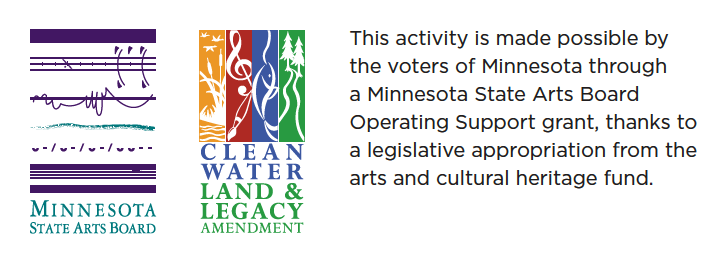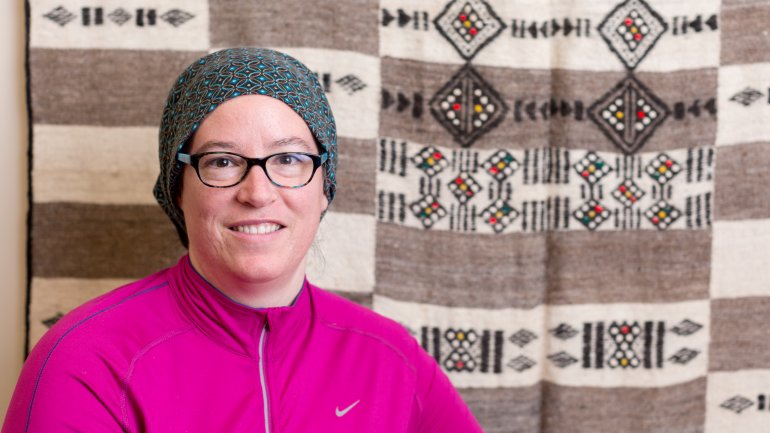Library Salon Series: Q&A with Dr. Heather Akou
Join us for our last salon before we break for the summer. On June 13 we are thrilled to welcome Dr. Heather Akou from Indiana University. She is an associate professor of fashion design, and was recently named the director of the Sage Fashion Collection, one of the most prestigious collections of its kind in the country. In her talk next week, she'll be discussing her primary research, focusing on non-Western fashion and textiles, as well as presenting a critical approach to museum collecting practices surrounding those collections.
I was able to catch Akou for a quick interview – despite it being very close to the end of the semester. She shared her thoughts surrounding her research and the seemingly inevitable connection between fashion and the politics of dress.
Tell us a little bit about yourself and your background.
I'm an associate professor of fashion design at Indiana University in the School of Art, Architecture and Design. I earned my bachelor's degree at Macalester College (in art) and my MA and PhD at the University of Minnesota (in design, housing, and apparel). While I lived in Minnesota, I worked for more than a year as a frame builder at the ICEBOX Gallery and for six years as a weaver at Custom Woven Interiors.
How did you come to your current area of study?
When I was in college I spent a semester in Mali (in West Africa). I had taken a class on African art, but I was blown away by what I saw people wearing and making. I thought, "I could study this for the rest of my life." When I returned, I was fortunate to connect with Joanne Eicher, who encouraged me to study with her at the University of Minnesota. That led to my research on Somali dress – [Somalis are] the largest community from Africa in Minnesota – and later to my research on contemporary Islamic fashion. With a background in studio art, I'm deeply invested in studying objects. That gets tricky when you're working with groups that are not well-represented in museum collections.
The politics of dress is an incredibly relevant topic, and particularly so during this fraught moment in history. Can you talk a bit about how your research is embracing and including the conversations that are happening today?
When I was first doing research on Somali dress, I resisted the idea that dress was "political," which is ironic, since many Somalis are acutely aware of politics. When I moved to Indiana, I started meeting Turkish women who had been forced by their government to make a choice: stop wearing hijab (Islamic dress) and continue their education in Turkey, or continue to wear it and either drop out of school or move to another country. Then in 2004, France passed a law banning "conspicuous religious symbols" in public schools; in 2011, they passed a law banning clothing that covers the face (which affects both the minority of Muslim women who wear face-covering veils and political protestors who want to conceal their identity). In 2017, several cities along the French and Italian Riviera tried to ban the "burqini" (a full-length swimsuit worn mostly by Muslim women). The situation in the US is a bit different since the constitution guarantees freedom of religion, but Muslims are still deeply impacted in their choices about dress by a growing undercurrent of Islamophobia. I still think most people (even Muslims) are not trying to make political statements with their appearance, but it's nearly impossible to avoid being affected by today's political climate. I've published about the politics of Somali dress, the politics of Muslim dress in the US after 9/11, and the politics of the burqini.
You were recently made the director of the Sage Fashion Collection at Indiana University. Can you talk to us about the collection and your plans for the future?
The Sage Collection is one of the oldest and largest collections of costume and fashion in North America, now with approximately 26,000 pieces. Since I study non-Western dress and fashion – and Sage collects from Western Europe and North America – I never expected to be the director. To be honest, I'm still wrapping my head around the possibilities. Most fashion history textbooks still focus on the West. Fashion historians have only just begun (within the last 10 years) to acknowledge that Western fashion is not the only fashion system – that fashion exists outside of the West. Sage is a treasure worth preserving, but I want to expand the collection's mission. I've already begun donating examples of Islamic fashion from my research collection – something students and the public are eager to see that was not previously available. Seeing and touching a burqini is a humanizing experience; our society needs that to counter the dehumanization of politics.
How does your work with Western and primarily non-Western fashion connect to craft?
Most people in the US think of 'fashion' as ready-to-wear fashion – clothing that you go purchase at the mall. High-end fashion has always been much more craft-oriented, with stunning embellishments, innovative draping and tailoring, and lavish (handmade) materials. In many parts of Africa, the only ready-to-wear is used clothing from the West – fine for children, manual labor, and cheap fashion, but not for special occasions. Handweaving, hand-dyeing and -printing, tailoring, and embellishment are crafts that are still very much alive and sought after.


